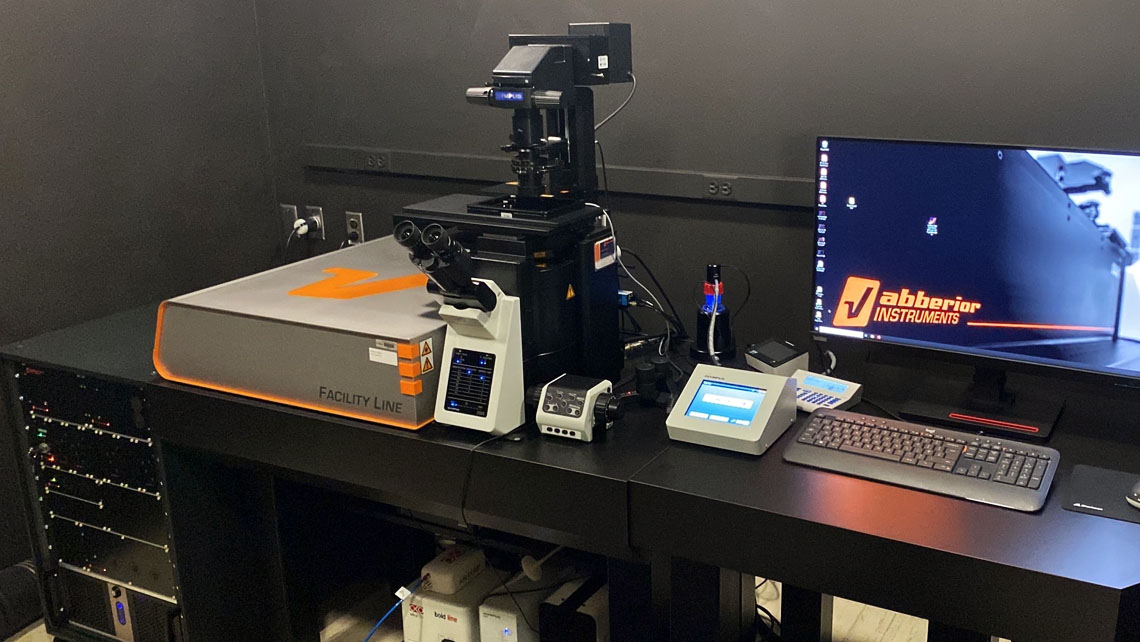Abberior Facility Line 3D Stimulated Emission Depletion (STED) Microscopy
This instrument was funded by an NIH S10 award. Publications and presentations that include data acquired with this system are required by NIH to acknowledge both the imaging core and the instrument funding. Please use the following text in your acknowledgments:
“STED microscopy was supported by NIH grant S10OD036331 and performed at the Center for Advanced Microscopy, a Nikon Center of Excellence, at McGovern Medical School, UTHealth Houston (RRID: SCR_025962).”
Key features include:
4 Excitation and 1 Depletion Laser LinesExcitation Lasers
Depletion Laser
|
Objectives
|
|
|
